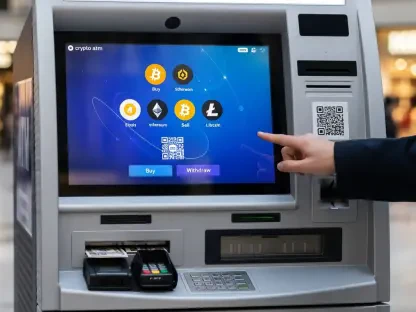The retail landscape is undergoing a profound transformation as digital technologies continue to reshape consumer behavior and expectations. Traditional brick-and-mortar stores face the challenge of staying relevant in an era dominated by online shopping, but the future of retail is far from bleak for physical stores. By blending the strengths of physical stores with the advantages of digital innovations, retailers can create seamless and engaging shopping experiences that meet the demands of contemporary consumers. This article delves into how retailers can successfully integrate digital and physical elements to thrive in the modern retail environment.
The Changing Retail Landscape
The rise of e-commerce has dramatically altered the retail industry, reshaping how consumers shop and what they expect from their shopping experiences. Between 2008 and 2013, online sales grew tenfold, while sales in physical stores remained stagnant, highlighting a significant shift towards the convenience, choice, and accessibility of online shopping. This trend has led consumers to expect a similar level of service and convenience from brick-and-mortar stores, making it imperative for physical retailers to integrate digital experiences into their environments.
Despite the growing dominance of e-commerce, the extinction of physical stores is not imminent. Projections indicate that physical stores will continue to account for over 80% of U.S. retail sales by 2020, signifying that brick-and-mortar retail remains a substantial component of the retail ecosystem. The key to their survival and success lies in adopting a hybrid model that leverages digital technologies to enhance the in-store experience, creating a bridge between the tangible and the virtual.
Embracing Digital Integration
To meet the high expectations of contemporary shoppers who are increasingly accustomed to the conveniences of online shopping, physical stores must embrace digital integration. This means using technology to not only expand product offerings and provide enriched product information but also to create personalized shopping experiences that resonate with today’s tech-savvy consumers. By doing so, retailers can offer the best of both worlds: the tactile and sensory benefits of in-store shopping combined with the convenience and personalization of e-commerce.
One effective strategy for achieving this is the use of interactive technologies such as iPads and digital shelves, which can significantly expand product ranges and enhance customer engagement. For example, Sephora utilizes iPads in its stores to provide detailed product content, allowing customers to learn more about products and make informed purchase decisions. Similarly, virtual fitting rooms equipped with 3D scanning technologies enable customers to try on clothes digitally, offering a modern twist to the traditional fitting room experience. These innovations not only improve customer engagement but also lead to higher conversion rates and reduced return rates.
Enhancing Customer Engagement
Creating personalized in-store experiences is crucial for building customer loyalty and increasing sales in today’s competitive retail landscape. Digital data-driven marketing strategies enable retailers to offer individualized daily offers, interactive storefronts, and strategic campaigns based on customer data. These techniques foster a more engaging and tailored shopping experience that appeals to modern consumers who value personalization and convenience.
For instance, Macy’s partnership with Shopkick utilizes iBeacon technology to send personalized offers to customers as they enter the store, enhancing the shopping experience from the moment they walk through the door. On a similar note, Meatpack’s competitive app strategy offers real-time discounts to customers who switch from a competitor’s store to theirs, demonstrating the power of precise, personalized marketing in driving customer engagement and loyalty. By leveraging technology to create unique and tailored experiences, retailers can foster stronger customer relationships and boost in-store sales.
Leveraging Customer Data
Customer data is an invaluable asset for retailers aiming to blend digital and physical retail seamlessly. By analyzing data from online and in-store interactions, retailers can gain insights into customer preferences, behaviors, and trends, which can then be used to optimize product offerings, tailor marketing campaigns, and improve the overall shopping experience. This data-driven approach allows retailers to make informed decisions that enhance customer satisfaction and drive sales.
For example, retailers can use customer data to identify popular products and ensure they are well-stocked in physical stores, minimizing stockouts and maximizing sales opportunities. Additionally, data can be employed to create targeted marketing campaigns that resonate with specific customer segments, increasing the effectiveness of promotional efforts. By harnessing the power of customer data, retailers can create a more personalized and efficient shopping experience that meets the needs and expectations of modern consumers.
Creating Seamless Shopping Experiences
The ultimate goal of blending digital and physical retail is to create a seamless shopping experience that meets the needs and expectations of contemporary consumers. This involves integrating digital tools and technologies into every aspect of the retail experience, from product discovery and selection to checkout and post-purchase support. By doing so, retailers can offer a cohesive and convenient shopping journey that bridges the gap between online and offline channels.
One way to achieve this seamless integration is through the implementation of omnichannel strategies that allow customers to move easily between online and offline channels. Services such as buy online, pick up in-store (BOPIS) or ship-from-store offer the convenience of online shopping combined with the immediacy of in-store pickup. Additionally, mobile apps and digital kiosks can enhance the in-store experience by providing product information, reviews, and personalized recommendations, making it easier for customers to find what they need and make informed purchase decisions.
Innovating for the Future
The retail world is experiencing a significant shift as digital technologies alter consumer behavior and expectations. Traditional brick-and-mortar stores now face the challenge of staying relevant as online shopping continues to dominate. However, the future of retail isn’t as bleak as it seems for physical stores. By integrating the strengths of a physical presence with the advantages of digital innovations, retailers can create a seamless and engaging shopping experience that caters to modern consumers.
In this article, we explore how retailers can successfully merge digital and physical elements to thrive in today’s retail landscape. One crucial strategy is the adoption of omnichannel retailing, which ensures that consumers have a unified shopping experience whether they shop online or in-store. Offering services like online order pick-ups, personalized in-store recommendations, or even augmented reality to visualize products can make the physical shopping experience more attractive.
Additionally, using data analytics can help retailers understand and anticipate customer needs better, allowing for more tailored marketing and inventory management. Creating an inviting and immersive in-store environment that leverages technology, such as interactive displays and mobile payment options, can enhance customer satisfaction and drive sales. By effectively blending the physical and digital realms, retailers can ensure they remain relevant and competitive in an ever-evolving retail market.









